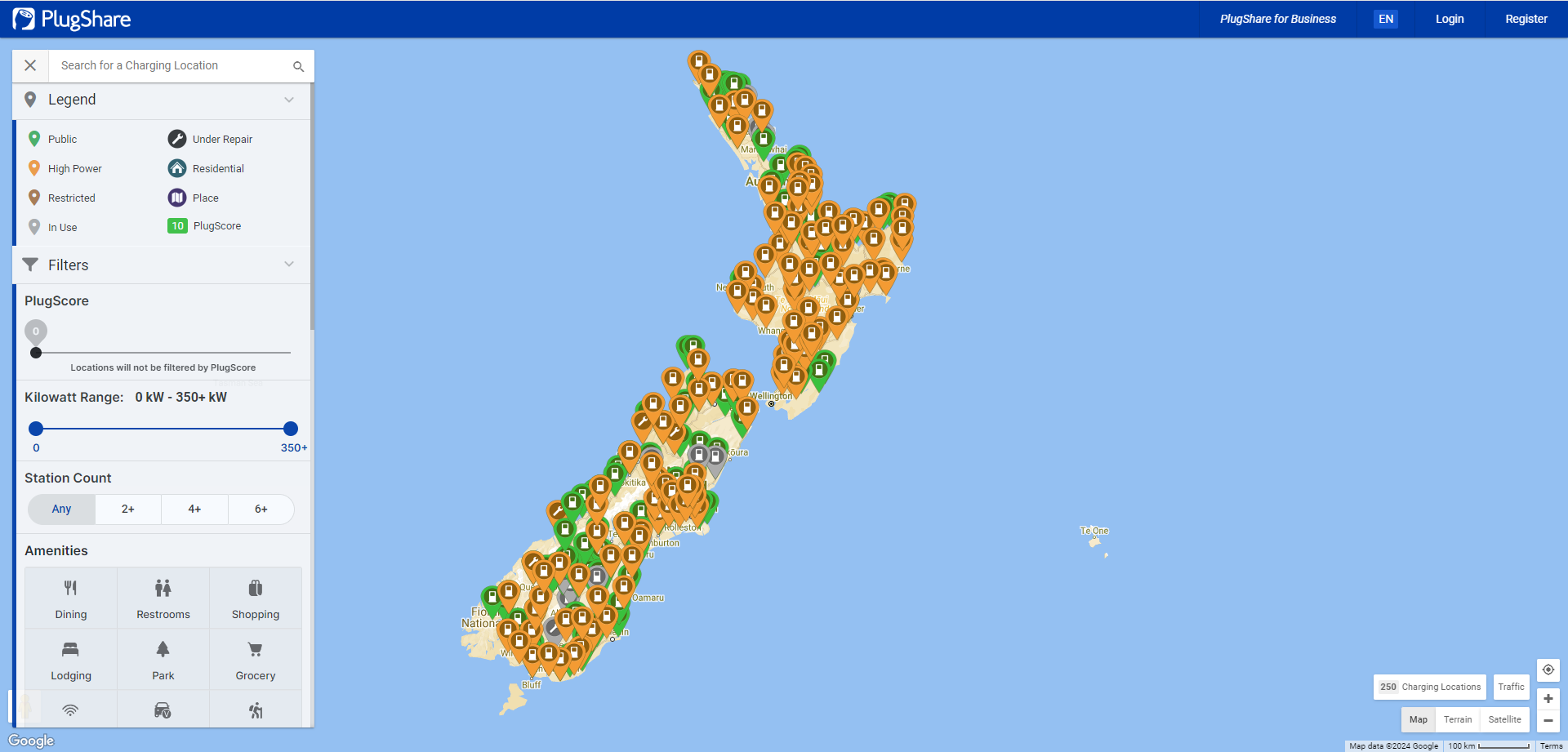EV Infrastructure in New Zealand

Electric Vehicle (EV) infrastructure is one of the key barriers often cited by potential EV drivers or those looking to switch to their first electric car. EV infrastructure refers to the availability of EV charging stations found in easy to access public areas including workplaces, car parks, council areas, and along major highways and arterial roadways. Without adequate EV infrastructure, many EV drivers may fear that they may run out of battery range, otherwise known as range anxiety.
The reality is that EV infrastructure is more widespread than first expected, especially when EV drivers are unaware of what to keep an eye out for.
Let’s check out the EV infrastructure in New Zealand’s three largest Cities.
- EV Infrastructure in Auckland – 168 Charging Locations
- EV Infrastructure in Christchurch – 135 Charging Locations
- EV Infrastructure in Wellington – 100 Charging Locations
Charging Habits and Infrastructure Use
The landscape of electric vehicle (EV) charging infrastructure is expanding rapidly, with numbers increasing monthly as businesses, local councils, and retail establishments recognise the pivotal role of EV infrastructure in enhancing destination appeal.
The increasing popularity of electric vehicles has led to a significant abundance of EV charging stations in the current landscape. Companies and governments alike are putting money into EV infrastructure as they know it will draw in customers who appreciate eco-friendly choices.
Knowing how EV infrastructure varies from that of conventional, internal combustion engine (ICE) powered cars is essential. In contrast to regular cars, which frequently need to be filled up from empty to full, EVs are usually charged overnight at home and occasionally topped off during the day at work, at a store, or a restaurant. It is common for electric vehicle owners to discover that they only require short, once or twice weekly visits to public charging stations in order to keep their batteries charged.
The ease of overnight and opportunistic charging reduces the reliance on EV infrastructure in large cities, where most driver’s daily travel distances rarely surpass 100 kilometers.
Focus on Long-Distance Travel
Where drivers depend on longer-distance travel, such as intercity routes and major highways, the significance of EV infrastructure is most evident. DC fast charging networks, such as the Ocular Atlas Charger, are essential in this situation. These stations are crucial for minimising travel disruptions and evaluating the durability of current EV models because they can recharge an EV’s battery to 80% capacity in as little as 20 to 30 minutes.
The construction of strong EV infrastructure beside highways will be crucial as EV usage in New Zealand soars in the upcoming years. With this expansion, drivers will be able to go outside of cities with assurance that they will always have access to rapid charging stations.
To summarise, the development of EV charging infrastructure is a reflection of a larger social movement towards environmentally friendly transportation. In addition to supporting the increasing number of electric vehicles on the road, more investment and development in EV infrastructure will improve the allure and accessibility of electric transportation throughout New Zealand.
Have any questions? Contact us:
Phone: 0800 990 032
Email: sales@evse.nz


